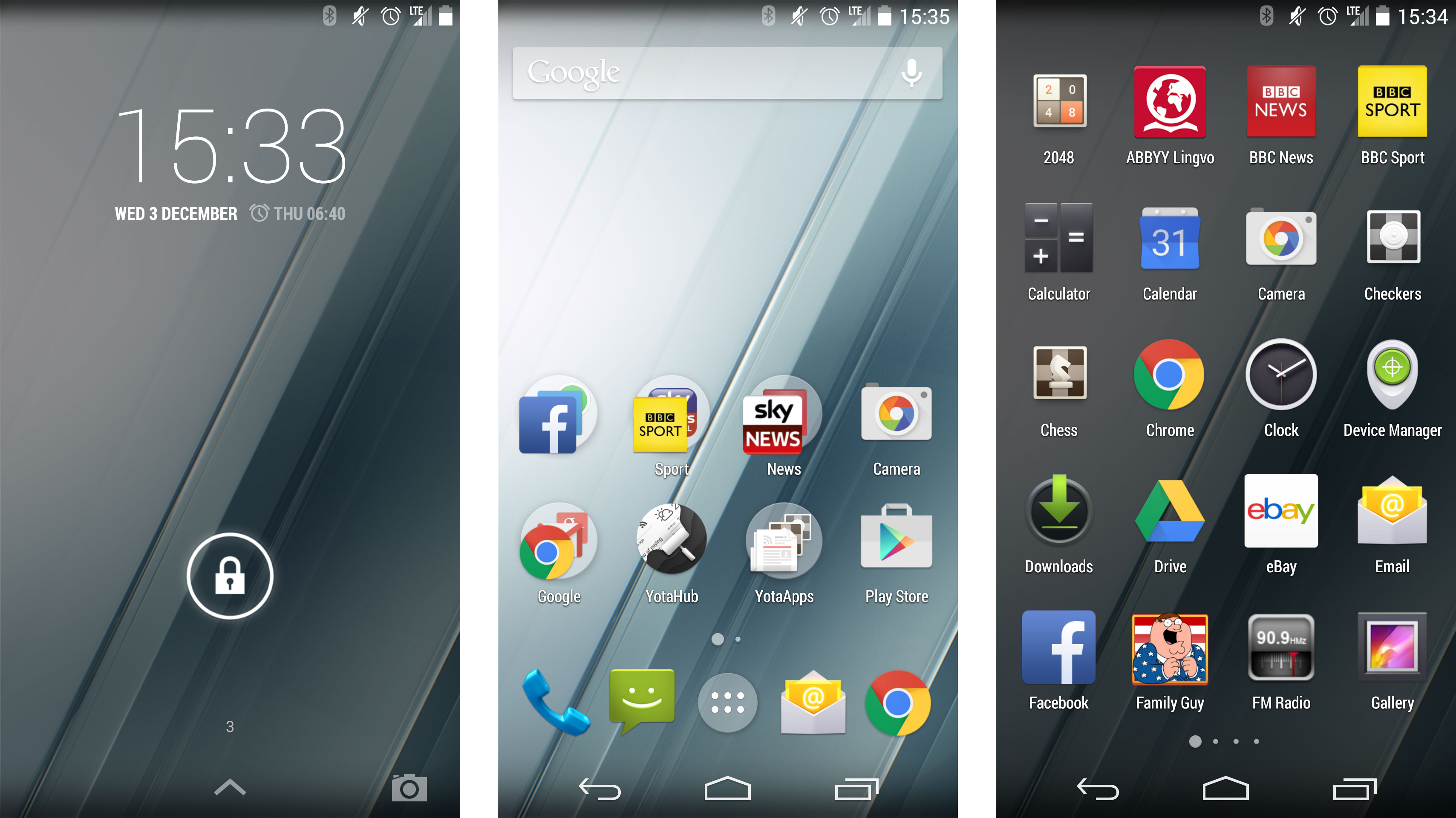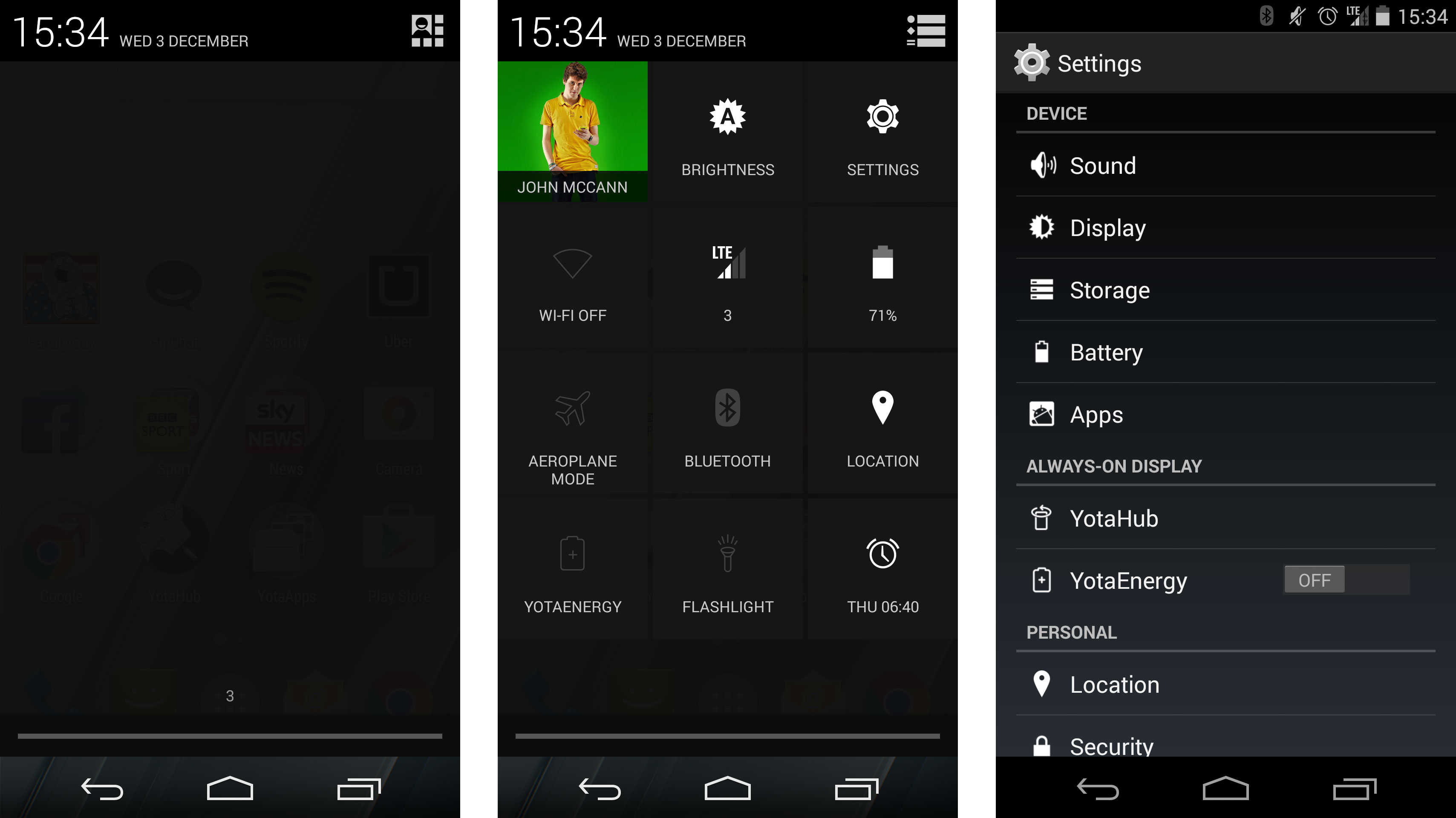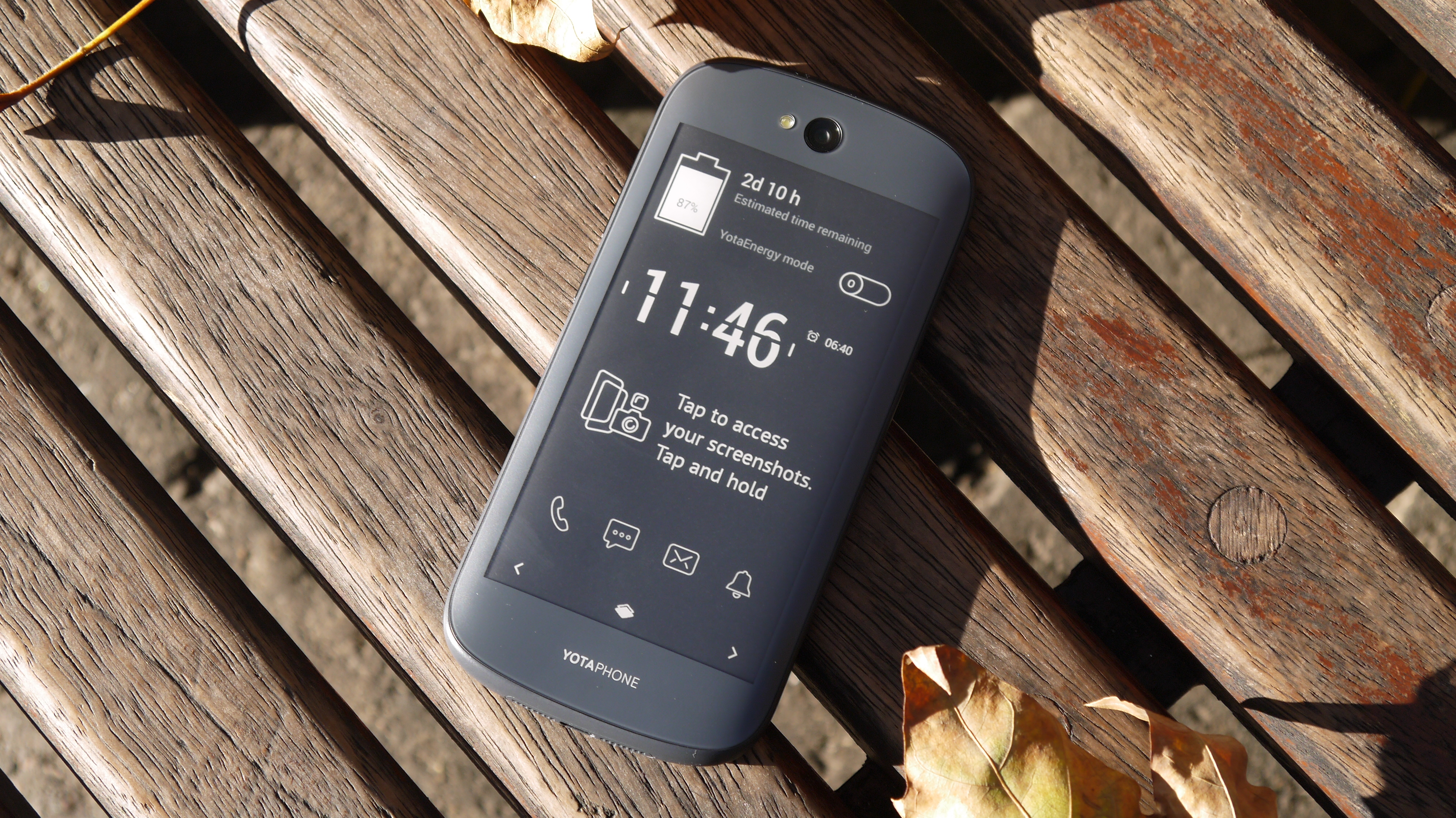Why you can trust TechRadar
I've spoken a lot about the rear display on the Yotaphone 2, so in this section I'm going to concentrate more on the experience on the 5-inch, full HD AMOLED screen.
The Yotaphone 2 rocks up running Android 4.4.3 KitKat. That's not quite the latest version of KitKat (which is 4.4.4), but that's already been replaced by Android 5.0 Lollipop.
Yota Devices has confirmed that it will be bringing Lollipop to the Yotaphone 2, but there's currently no time frame for the update as extra work is required for the second screen integration.
The good news here is Android has been left alone, giving you a pure experience without a manufacturer overlay.

If you've used an Android device before you'll have no trouble picking up the Yotaphone 2 and getting to grips with it straight away.
It means you get the traditional unlock screen with a shortcut to the camera and pull down notification bar with a separate screen of quick settings. Drag down with two fingers and you'll been shown the quick settings page rather than your notifications.
Yota Devices has added a torch quick setting in here which is useful for stumbling home at 2am from a bar, plus there's a toggle for the YotaEnergy power saving mode.
As I've mentioned earlier in this review, reading a message or dismissing a notification on the rear screen doesn't always clear if from the notification bar.

On a number of occasions during my time with the Yotaphone 2 I found myself excitedly dragging down from the top of the screen to see who's just text me, only to find it's one I've already read. Sad face.
Yota has included a small selection of pre-installed applications, most of which relate to the rear display, and thus are totally acceptable.
YotaHub is your one-stop-shop for customising covers and panels on the rear display, while you also get four games (chess, checkers, sudoku and 2048) to play on the EPD (Electronic Paper Display).
The Yotaphone 2 comes with a 2.2GHz Snapdragon 800 processor, which is now over a year old and has been succeeded by Qualcomm's 801 and 805 chips.

This means that the Android interface isn't quite as snappy as 2014's flagship handsets, and while it's by no means slow every now and then there's a half second load time wait.
I ran the Geekbench 3 benchmarking test on the Yotaphone 2 and after several runs it averaged a respectable 2719 for the multi-core test.
That's not quite as high as the Sony Xperia Z3 (2737), Samsung Galaxy S5 (2905) or iPhone 6 (2902), but it did beat the LG G3 (2561) while the original Yotaphone (1054) was blown out of the water.
I was able to play a variety of games without issue on the handset, and while load times may have been a touch longer than on phones packing newer processors it certainly wasn't sluggish, thanks in part to the 2GB of RAM.
Yota highlighted that it had to overcome various heat issues surrounding the processor in Yotaphone 2 thanks to the dual-screen setup making it harder for the heat to dissipate.
During my time with the handset I did find that it could heat up quickly during extending use - especially when playing a graphically intense game. It does get quite hot, more so than most mobiles, but not to an uncomfortable level.

TechRadar's former Global Managing Editor, John has been a technology journalist for more than a decade, and over the years has built up a vast knowledge of the tech industry. He’s interviewed CEOs from some of the world’s biggest tech firms, visited their HQs, and appeared on live TV and radio, including Sky News, BBC News, BBC World News, Al Jazeera, LBC, and BBC Radio 4.
